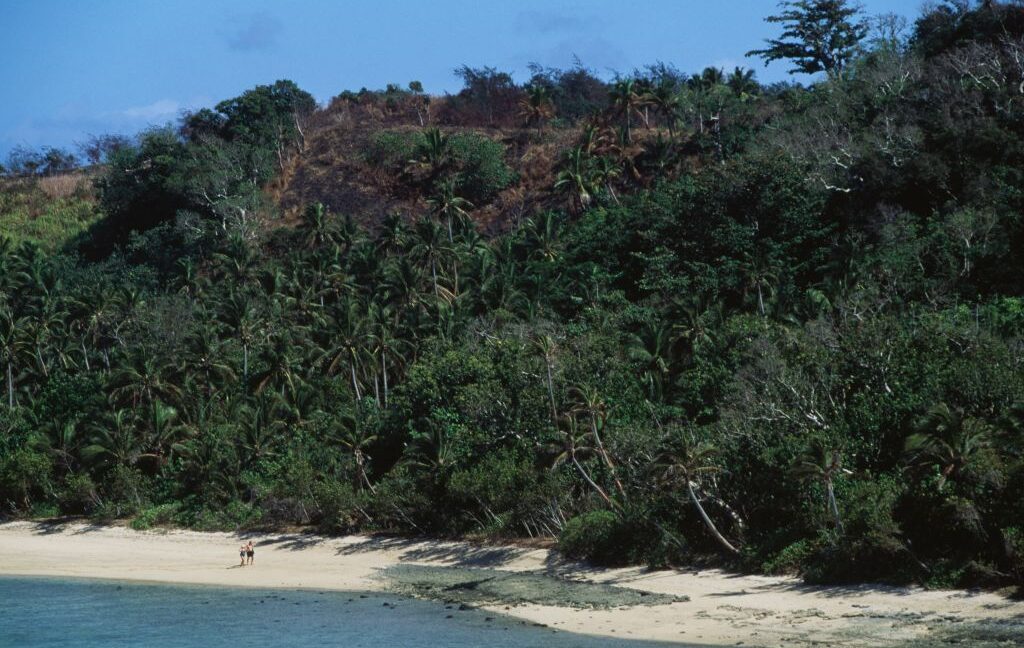Science
Fijian Ants Provide Insights into Global Insect Decline

A recent study by a team of Japanese and Australian scientists reveals critical insights into the decline of insect populations, using Fijian ants as a case study. The research, which spanned multiple years, highlights the alarming trend of diminishing insect diversity, a phenomenon that has been referred to as an “insect apocalypse.” This term gained traction following a study by the Krefeld Entomological Society in late 2017, which found that two-thirds of the insect populations in protected areas of Germany had disappeared over the past 25 years.
Focusing on ants, which are easier to collect and analyze, the researchers sought to understand the historical dynamics of insect populations. According to Alexander Mikheyev, an evolutionary biologist at the Australian National University, ants offer a diverse enough group for comparative studies. The Fijian archipelago, comprising 330 islands, was selected for its unique balance of isolation and biodiversity, making it an ideal setting for this investigation.
The team aimed to study ant populations over thousands of years, rather than the recent 25 years examined in prior studies. By employing community genomics, they explored the collective genetic material of ant populations to gain deeper insights into their evolutionary history. While only a little over 100 of the islands are permanently inhabited, the researchers overcame challenges by analyzing museum specimens of ants collected over the past decade.
Despite the difficulties associated with the poor quality of DNA in museum specimens—often collected under less-than-ideal conditions—the team utilized a method called high-throughput museumomics. This innovative technique allows for genetic analysis without the need to sequence entire genomes, enabling the researchers to assess genetic diversity among the samples.
Initially, the research confirmed the existence of 144 ant species across 40 genera, but as analysis progressed, the team refined their understanding, ultimately identifying 127 distinct species. The genetic data revealed a complex history of colonization, indicating at least 65 separate colonization events that contributed to the current diversity of Fijian ants. The first ants are believed to have arrived millions of years ago, with subsequent waves of colonization that included species brought by the first human settlers, the Lapita people, around 3,000 years ago.
The arrival of humans introduced significant changes to the Fijian environment. Practices such as slash-and-burn agriculture led to habitat destruction, particularly impacting endemic ant species. Mikheyev noted that while the initial human population density was low compared to today, their agricultural practices still disrupted the delicate ecosystems.
The situation deteriorated further in the 19th century when European traders, drawn to the region for sandalwood, began to establish connections to global trade networks. These traders inadvertently introduced invasive species, such as fire ants from Latin America, which thrived in the altered landscapes and contributed to the decline of 79 percent of endemic Fijian ant species.
Mikheyev emphasized that while the findings from Fiji serve as a useful model for understanding broader insect population trends, they also raise important questions about the future of global biodiversity. “We can start leveraging collections found in museums around the world,” he stated, indicating the potential for similar studies elsewhere.
The implications of continued declines in insect populations extend beyond the loss of specific species; they pose risks to ecosystems and human well-being. Mikheyev cautioned against complacency, suggesting that while some species may adapt and thrive, the overall loss of biodiversity could have far-reaching consequences. “If we just go with that philosophy, we’re really going to be irreparably losing important and interesting parts of our ecology,” he warned.
As researchers continue to explore these dynamics, the study published in Science in 2025 represents a vital step in understanding the ongoing insect crisis. The findings highlight the urgency of addressing environmental changes that threaten the delicate balance of ecosystems worldwide.
-

 Science2 months ago
Science2 months agoToyoake City Proposes Daily Two-Hour Smartphone Use Limit
-

 Health2 months ago
Health2 months agoB.C. Review Reveals Urgent Need for Rare-Disease Drug Reforms
-

 Top Stories2 months ago
Top Stories2 months agoPedestrian Fatally Injured in Esquimalt Collision on August 14
-

 Technology2 months ago
Technology2 months agoDark Adventure Game “Bye Sweet Carole” Set for October Release
-

 World2 months ago
World2 months agoJimmy Lai’s Defense Challenges Charges Under National Security Law
-

 Technology2 months ago
Technology2 months agoKonami Revives Iconic Metal Gear Solid Delta Ahead of Release
-

 Technology2 months ago
Technology2 months agoSnapmaker U1 Color 3D Printer Redefines Speed and Sustainability
-

 Technology2 months ago
Technology2 months agoAION Folding Knife: Redefining EDC Design with Premium Materials
-

 Technology2 months ago
Technology2 months agoSolve Today’s Wordle Challenge: Hints and Answer for August 19
-

 Business2 months ago
Business2 months agoGordon Murray Automotive Unveils S1 LM and Le Mans GTR at Monterey
-

 Lifestyle2 months ago
Lifestyle2 months agoVictoria’s Pop-Up Shop Shines Light on B.C.’s Wolf Cull
-

 Technology2 months ago
Technology2 months agoApple Expands Self-Service Repair Program to Canada









